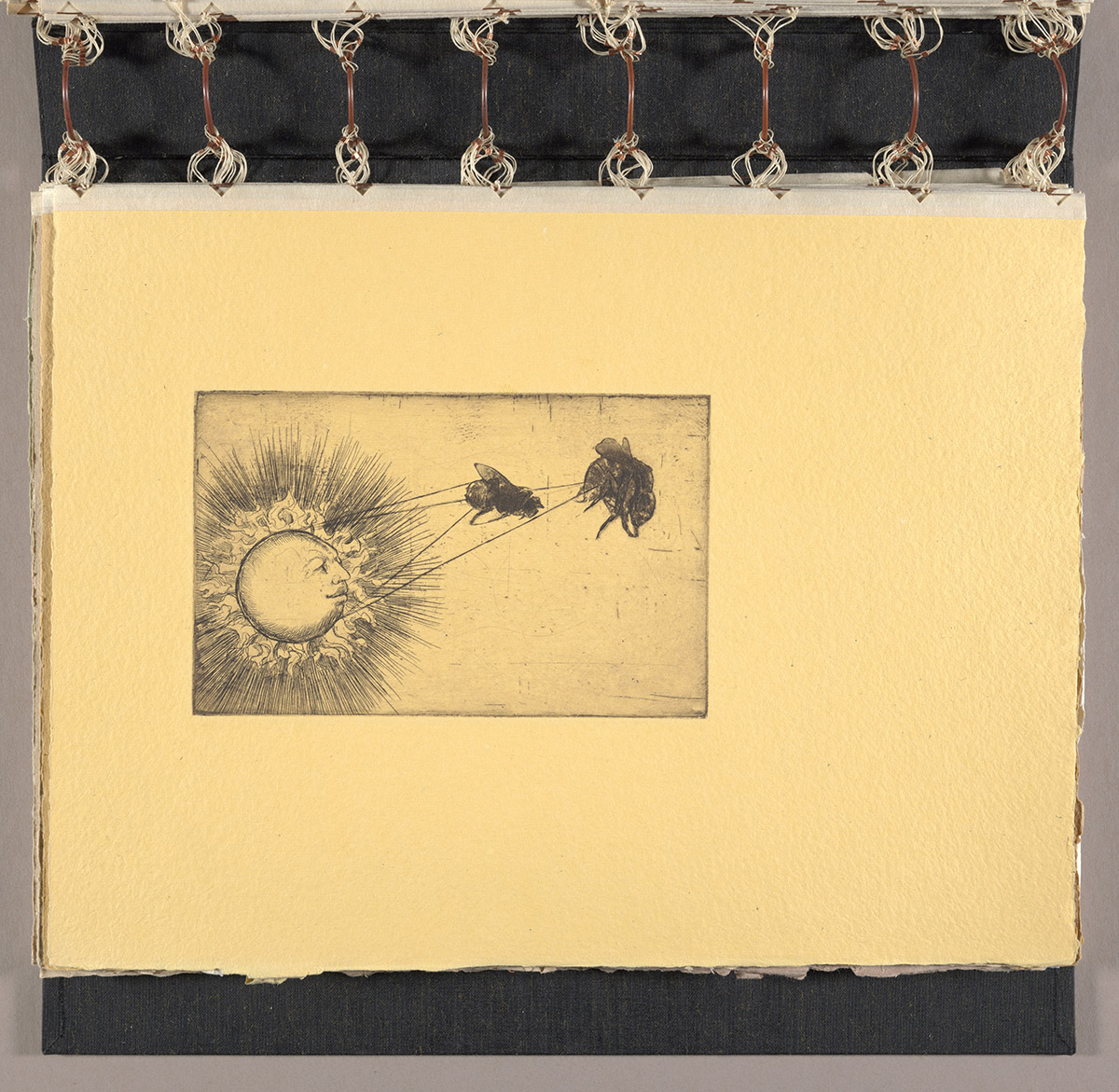Books from 14th to 21st centuries featured in exhibition
By Melanie Lefkowitz

Books provide information, but as objects, they also spark inspiration.
Over the centuries, books have come in many different formats – from 17th-century instruction manuals about anatomy that worked like early pop-up books, with folding flaps and removable parts, to 20th-century works of art intentionally created in book form.
“Wake the Form: Artists’ Books in Context,” a new exhibition in Cornell University Library’s Division of Rare and Manuscript Collections (RMC), features both the artists’ books of the modern era and the innovative objects that inspired them. Items in the exhibition will explore not only today’s artists’ books, but the history of the book itself.
“Artists’ books are an increasingly popular art form, and I’m excited that visitors will be able to see and experience these beautiful objects and how they evolved over time,” said Marsha Taichman, visual resources librarian, who is co-curating the exhibition.
The forms of artists’ books include decks of cards, postcards, flip books, scrolls and standard books. They are often intended as portable, interactive works of art as well as statements on the conventional book format.
The exhibition will open June 8 with a reception and a talk by Johanna Drucker, the Breslauer Professor of Bibliographical Studies in the Department of Information Studies at the University of California, Los Angeles, and an expert in the art of the book. Drucker will speak at 4:30 p.m. in Goldwin Smith’s Hollis E. Cornell Auditorium about the political uses and historical antecedents of today’s artists’ books, followed by a 5:30 p.m. reception in Kroch Library’s Hirshland Gallery. Both events are free and open to the public.
Items on display will include abecedaria, objects listing the letters of the alphabet. Among these is an example of a hornbook, widely used for centuries as sturdy alphabet primers for schoolchildren, with letters written on parchment and covered in horn or directly carved into bone or wood.
The exhibition will also feature books making innovative use of typography, unusual bindings and unlikely materials, including floppy disks, apple seeds and human hair.
Part of the exhibition will be dedicated to conceptual art books, inventive objects created during the conceptual art movement of the 1970s in which ideas take priority over form, with works by Ed Ruscha, Sol LeWitt, Gordon Matta-Clark and John Baldessari.
The books in the exhibition are from the Division of Rare and Manuscript Collections and the Fine Arts Library, with prints from the Herbert F. Johnson Museum. Many of the items on display were originally donated by Helen ’62 and Paul Anbinder ’60.
“Because we all have relationships with books, we can all appreciate these innovative forms, and recognize more familiar books within them,” said Marcie Farwell, RMC’s technical services archivist, who is co-curating the exhibition with Taichman; Susette Newberry, Olin and Uris libraries’ director of research and learning services; Eisha Neely, RMC exhibitions coordinator and reference specialist; and Sade Ayorinde, a doctoral student in the College of Arts and Sciences’ Department of Art History and Visual Studies.
The “Wake the Form” exhibition runs through October.
Melanie Lefkowitz is staff writer, editor and social media coordinator for Cornell University Library.
Media Contact
Get Cornell news delivered right to your inbox.
Subscribe